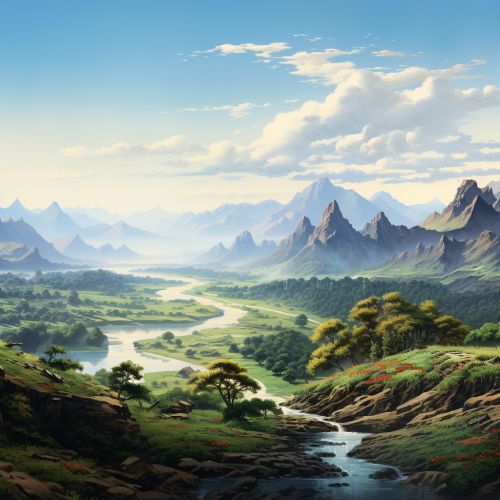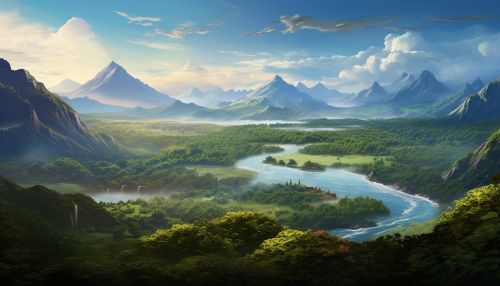Asia
Geography
Asia is the largest continent on Earth, covering about 30% of the planet's land area and hosting approximately 60% of the world's current human population. It is located primarily in the eastern and northern hemispheres. Asia is traditionally defined as part of the landmass of Eurasia—with the western portion of the latter occupied by Europe—lying east of the Suez Canal, east of the Ural Mountains, and south of the Caucasus Mountains and the Caspian and Black Seas.


Asia is characterized by diverse geographical features. It is home to the world's highest point, Mount Everest, located in the Himalayas, and the lowest point, the Dead Sea, located at the border of Jordan and Israel. Asia also has the longest coastline of any continent, stretching over 62,800 kilometers.
Climate
The climate in Asia varies greatly due to its vast size. It ranges from arctic and subarctic in Siberia to tropical in southern India and Southeast Asia. It is dry in the deserts of the Middle East and extremely humid in the rainforests of Southeast Asia.
History
Asia has a rich and diverse history, with some of the world's earliest civilizations originating from this continent. The history of Asia can be seen as the collective history of several distinct peripheral coastal regions, each with its own distinct characteristics and traditions.
Culture
Asia is renowned for its cultural diversity. This continent is the birthplace of many religions such as Hinduism, Buddhism, Confucianism, Taoism, Judaism, Christianity, Islam, Sikhism, and many others. Languages, literature, philosophy, architecture, dance, music, painting, and other arts in Asia have also had a profound impact on the world's cultural heritage.
Economy
Asia has one of the most diverse economies in the world. It is home to some of the world's largest and most prosperous economies, such as Japan, China, and India. However, there are also many developing and underdeveloped economies in Asia.
Politics
Asia is home to many different political systems, ranging from absolute monarchies to democratic republics. The political landscape of Asia is often characterized by its level of economic development, historical influences, and cultural background.
Demographics
Asia is the most populous continent, with its 4.5 billion inhabitants accounting for 60% of the world's population. The two most populous countries in the world, China and India, are in Asia.
